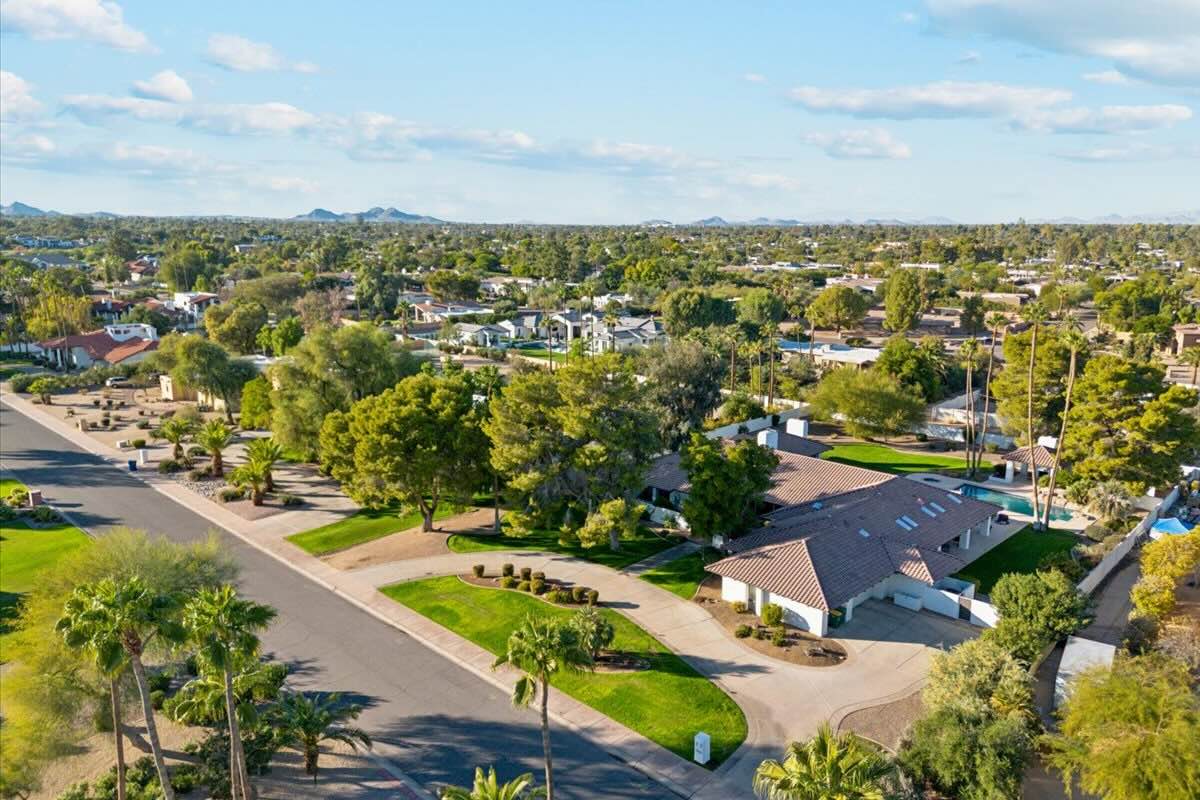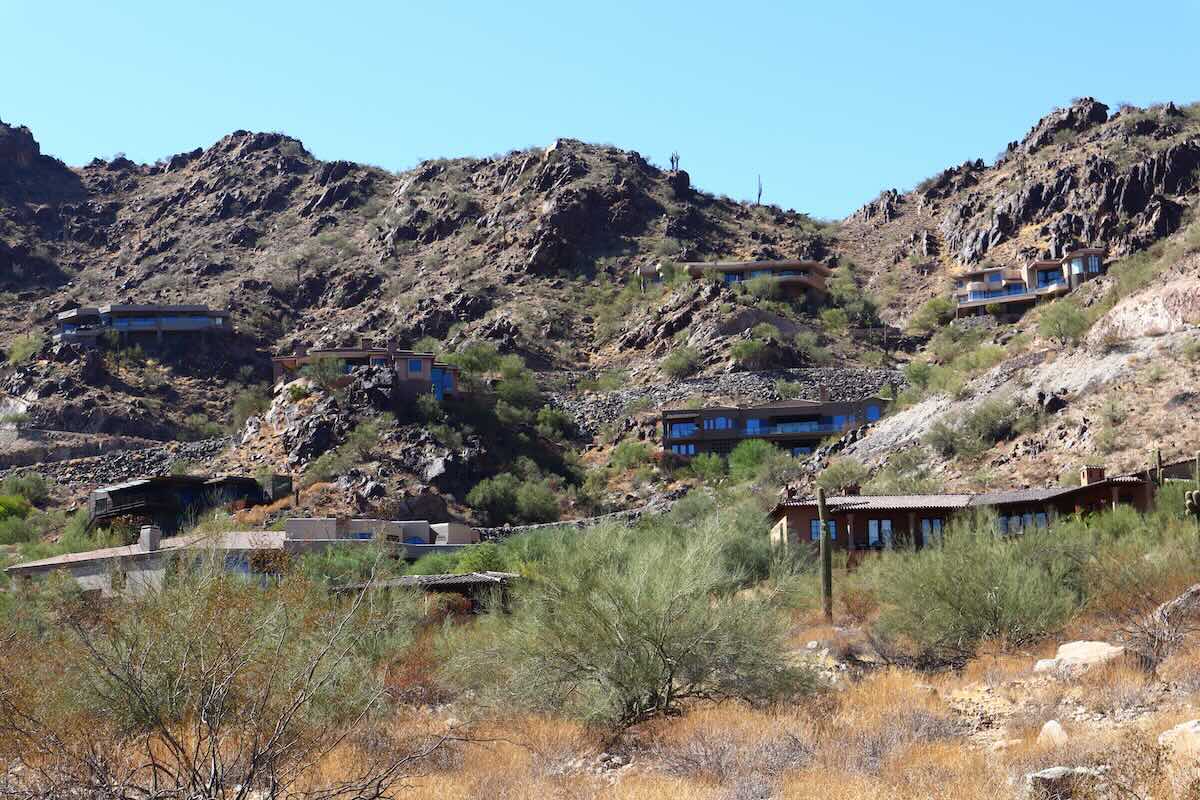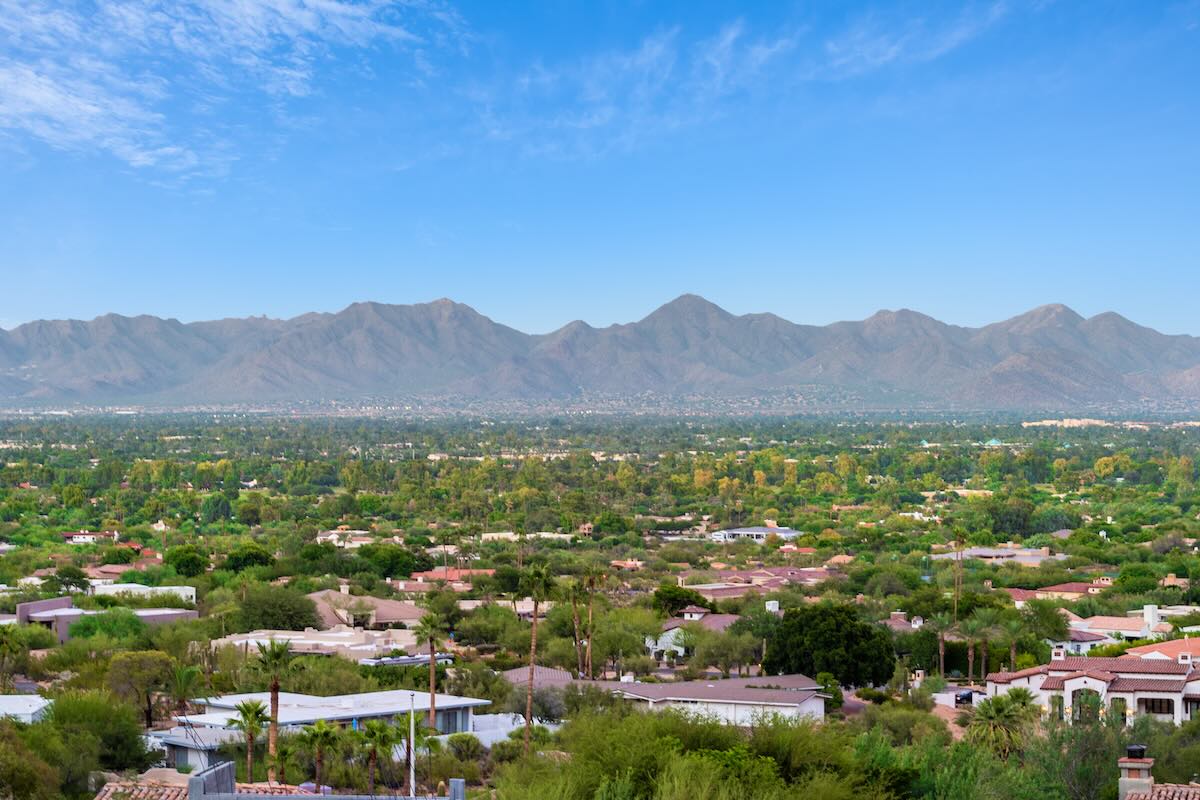What’s The Weather Like In Paradise Valley, Arizona? A Rundown
What's The Weather Like In Paradise Valley, Arizona?
Tucked between rugged desert peaks and multi-million-dollar architecture, Paradise Valley has a signature weather profile: dry and consistently sunny.
It’s something you have to design your lifestyle around.
With an average of 294 days of sunshine a year and air so dry it could age wine, this slice of the Sonoran Desert is made for those who prefer poolside lounging in January and early-morning hikes in July.
Curious what you're in for? Let's get into it.

Geographical Overview Of Paradise Valley, Arizona
Before we dive into the details of Paradise Valley weather, it helps to understand the lay of the land. Here are some important things to know about Paradise Valley:
Location & Landscape
Where is Paradise Valley? Paradise Valley sits northeast of Phoenix and just west of Scottsdale. But make no mistake, it’s in a league of its own. Known for its sprawling estate lots, minimal commercial clutter, and strict zoning laws, this desert enclave values space and serenity over sprawl.
Framed by Camelback Mountain to the south, Mummy Mountain in the center, and the McDowell range to the east, the landscape provides an incredible backdrop that you just don’t get anywhere else.
That terrain brings subtle elevation shifts, which impact everything from breeze patterns to temperature dips.
Paradise Valley weather is different. It's higher elevation, cooler nights, zero smog, and fake sunsets. It’s dry, clean, and built for patio living.
Influence Of Surrounding Regions
Paradise Valley is surrounded by urban energy (Phoenix, Scottsdale, and Paradise Valley Village are nearby), but its weather tells a slightly different story.
Thanks to its open desert layout, low building density, and elevation, Paradise Valley, AZ, often has cooler nights, quieter winds, and less of the heat-retaining concrete effect you’ll find in denser neighborhoods.
Locals will tell you: step outside at 7 a.m. in Paradise Valley, and it feels refreshingly crisp, even in midsummer, something the low-lying parts of Phoenix can’t claim.
Climate Characteristics Throughout The Year
When people think of “desert,” they usually picture nonstop heat, but the Paradise Valley weather has layers. There’s rhythm to the seasons here, and knowing how they unfold can make all the difference in how (and when) you enjoy everything this town offers.
Seasonal Weather Patterns
Desert seasons go beyond hot vs not. There’s nuance. Here’s how it breaks down:
Summer (June–August): This is when the thermostat flexes. Expect triple-digit highs most days, with July often topping 110°F. It’s dry, though, and if you’ve got a misted patio or backyard pool, you’re golden.
Fall (September–November): Think warm days, cooler nights, and patios finally getting their groove back. Locals call this “second spring.”
Winter (December–February): Mild, sunny, and absurdly pleasant. Afternoon highs in the 60s and 70s make it the perfect time to hit the trail, tee box, or town.
Spring (March–May): Wildflowers show off, the days warm up fast, and the Paradise Valley weather hits that sweet spot locals secretly love the most.
Differences Between Day & Night Temperatures
You'll notice the swing, not just the golf kind. The desert air loses heat fast, and it's not unusual for day temperatures to hit 100°F and then drop down to 75°F by nightfall.

Average Temperatures by Season
Here’s what the Paradise Valley weather forecast looks like throughout the year:
| Season | Avg High (°F) | Avg Low (°F) |
| Winter | 65 – 72 | 38 – 45 |
| Spring | 75 – 90 | 45 – 60 |
| Summer | 100 – 106 | 75 – 85 |
| Fall | 80 – 95 | 55 – 70 |
Rainfall & Humidity Levels
Rain? Not much of it. Paradise Valley, Arizona, weather delivers around 7 to 9 inches of annual precipitation, just enough to keep the saguaros proud.
Winter: Light showers roll in here and there.
Monsoon season (July–September): A different kind of drama. Quick, intense storms with lightning and flash floods. Great for sky watching, not so great for your hair.
Humidity is typically low. You'll notice when it spikes (mainly during monsoon season), but it never lasts long.
Sunshine & Daylight Patterns
This part of Arizona is practically allergic to clouds. The weather near Paradise Valley Village, Phoenix, means an average of 300+ days of sunshine annually. The UV index can be brutal, especially from March through September.
If you’re spending time outdoors (which, let’s be honest, is kind of the point here), sun protection is an absolute must.
Wind Patterns & Their Impact
Winds tend to keep a low profile. On most days, breezes hover around 5–10 mph. During monsoons, though? Expect gusty conditions that shake palm fronds and stir up desert dust. But the breeze plays nice for most of the year, just enough to rustle the oleanders.
Outdoor Activities & Weather Suitability
Paradise Valley weather is made for the outdoors, assuming you know when to go out. From October through April, the conditions are postcard-perfect. Early tee times and buzzing trailheads by sunrise. Long lunches stretch out on shaded patios while the desert takes a breather.
In the summer, it’s all about timing. Locals get their workouts in before 8 a.m., hit the spa mid-afternoon, and save dinners for when the sun dips low.
Bonus: Summer means quieter resorts and more elbow room at your favorite haunts.

Local Tips For Handling Weather Changes
Consider this your insider cheat sheet, from those of us who live, breathe, and occasionally sweat it out here.
1. Hydrate Like It’s A Sport
Desert living demands hydration. Not just a water bottle in your car. We're talking electrolytes, mineralized water, and hydration habits that start before the hike.
If you feel thirsty, you're already behind. Keep a chilled refillable bottle in every car, golf cart, and gym bag you own.
2. Layers Equal Freedom
In spring and fall, you’ll wake up needing a hoodie, hit lunch in short sleeves, and throw on a light jacket at sundown. The temperature swing can hit 30 degrees in a single day.
Locals know that breathable, adaptable fabrics are the difference between enjoying your patio dinner and regretting what you're wearing.
3. Misters & Shade Are Essentials
Ask any longtime Paradise Valley resident: the proper shade structure or a high-quality misting system can extend your outdoor season by months.
Whether sipping cold brew by the pool or hosting a happy hour under string lights, staying cool without hiding indoors is a must-have.
4. UV Index Counts, So Do Polarized Lenses
We get the sun, and we get a lot of it. And with that comes UV levels that aren’t messing around. Even in winter, it’s easy to underestimate sun exposure.
Sunscreen isn't just for pool days, and cheap sunglasses don’t cut it. Invest in high-quality sunwear, polarized sunglasses, and protective headgear built for long days outside.
5. Mornings Are Golden
From Memorial Day to Labor Day, Arizona mornings are your VIP access pass to the outdoors. Trails, gyms, golf courses, even farmers markets; everyone’s up and moving early.
After 9 a.m.? The heat flips a switch, and locals head either indoors or into a pool. Embrace the schedule shift, and your whole summer feels different.
Conclusion
Paradise Valley weather shows up year-round. Think blue skies in February. Early trail runs in June. Pool days that start before spring even hits.
It’s a place where the forecast often takes a backseat to your plans. But when the elements matter, it’s smart to understand how they work.
At Williams Luxury Homes, we understand desert living. From helping clients stage a home with ideal sun exposure to knowing which communities catch the best evening breeze, our insights run deeper than the data. If this helped you get a better feel for Paradise Valley, feel free to browse LUXE BLOG. We’re always sharing helpful knowledge here.


















